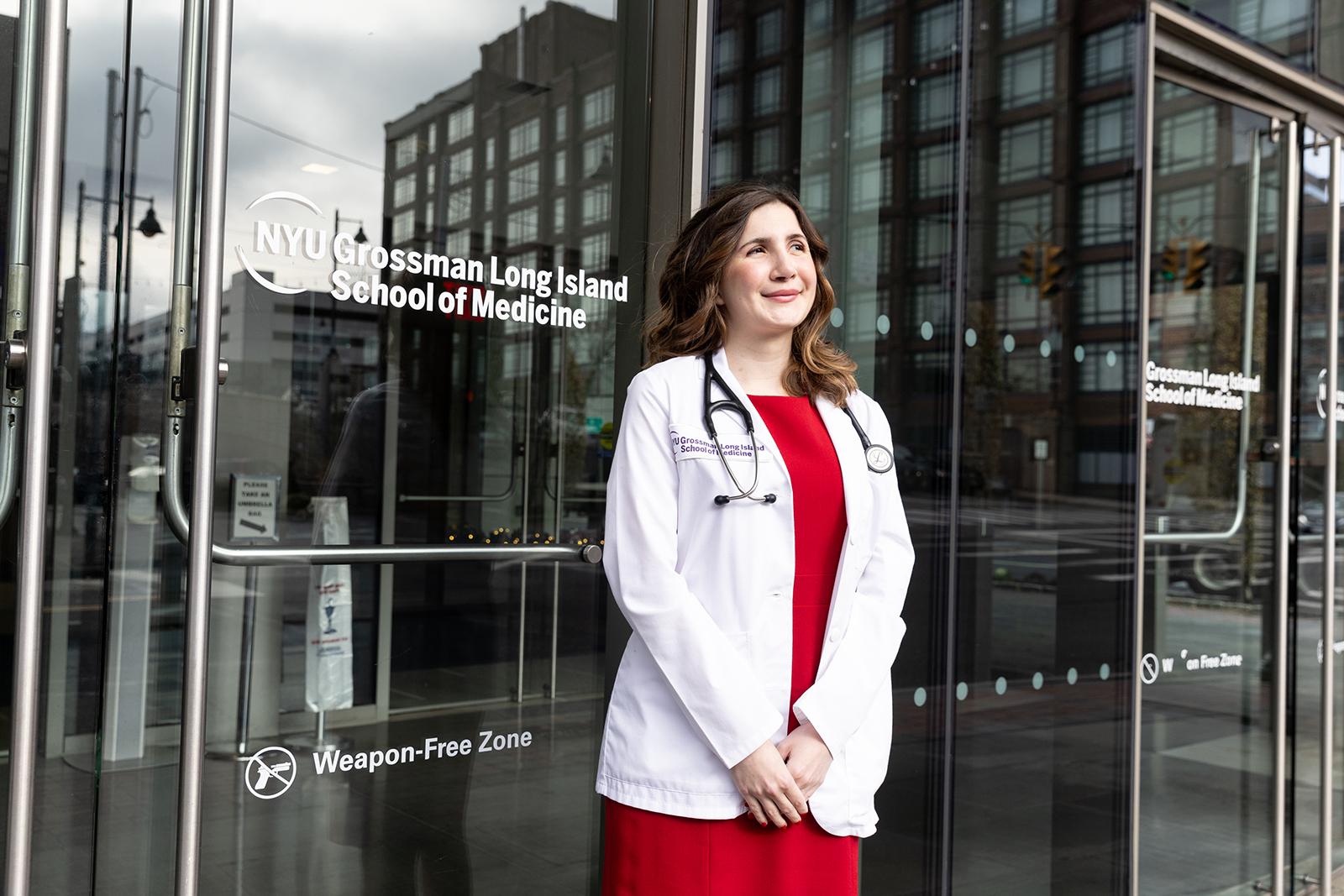As the U.S. faces a critical shortage of primary care physicians, medical schools grapple with guiding students toward foundational healthcare roles amid alluring financial incentives in specialized fields.
Can medical schools funnel more doctors into the primary care pipeline?

Key Takeaways:
- The U.S. may face a shortage of up to 40,400 primary care doctors by 2036.
- Many medical students shift from primary care to higher-paying specialties during their education.
- Financial incentives and medical school cultures significantly influence career choices.
- Successful programs at certain schools are effectively encouraging primary care careers.
- Systemic challenges and administrative burdens deter many from entering primary care.
A Looming Shortage of Primary Care Physicians
Throughout her childhood, Julia Lo Cascio dreamed of becoming a pediatrician. Now in her final year at NYU Grossman Long Island School of Medicine—a tuition-free institution founded specifically to train primary care doctors—she remains committed to her goal. Yet, her dedication stands in contrast to a national trend threatening the future of foundational healthcare.
The Association of American Medical Colleges projects a shortage of 20,200 to 40,400 primary care doctors by 2036. In 2024 alone, 252 of the nation’s 3,139 pediatric residency slots went unfilled, and family medicine programs faced 636 vacant residencies out of 5,231. As students increasingly chase higher-paying specialties, the gap in primary care widens.
The Shift from Aspiration to Specialization
Many medical students start their education expressing interest in primary care. However, exposure to academic medical centers often shifts their focus toward complex cases in hospitals and specialized fields. Financial incentives play a significant role in this transition.
“The driving force is often money,” said Andrew Bazemore, a physician and senior vice president at the American Board of Family Medicine. “Subspecialties tend to generate a lot of wealth, not only for the individual specialists but for the whole system in the hospital.”
Specialties like orthopedics and dermatology offer average annual incomes of $558,000 and $479,000 respectively, according to Medscape. In contrast, pediatrics—among the lowest-paid specialties—averages $260,000. The allure of higher salaries and prestige makes specialties more attractive, especially when coupled with the burden of medical school debt.
Medical School Culture and Career Choices
Medical school environments significantly influence career trajectories. Schools based in academic medical centers may inadvertently steer students toward specialties by emphasizing complex hospital cases over primary care experiences. Additionally, departments with substantial federal and pharmaceutical-company grants often hold greater prestige, attracting students toward those fields.
“Professors and peers alike admonish students: If you’re so smart, why would you choose primary care?” the article notes. Such cultural pressures can dissuade even the most dedicated students from pursuing primary care.
Systemic Challenges in Primary Care Practice
Beyond medical school, the realities of primary care practice present additional deterrents. Administrative burdens, such as seeking prior authorizations from insurers and managing electronic medical records, disproportionately affect primary care physicians.
“It’s not the medical schools that are the problem; it’s the job,” said Caroline Richardson, chair of family medicine at Brown University’s Warren Alpert Medical School. “The job is too toxic.”
With more patients and less financial support to hire administrative help, primary care practices often struggle under burgeoning paperwork requirements, making the field less appealing to new doctors.
Educational Models Making a Difference
Despite these challenges, some medical schools have succeeded in directing graduates toward primary care through targeted programs and recruitment strategies.
The University of Washington, for instance, has a decades-old program placing students in remote parts of Washington, Wyoming, Alaska, Montana, and Idaho. By recruiting students from these areas and providing meaningful primary care experiences, more than 20% of its graduates settle in rural communities.
Similarly, the University of California-Davis increased the percentage of students choosing family medicine from 12% in 2009 to 18% in 2023. Programs like an accelerated three-year primary care pathway focus on enrolling first-generation college students, who often have personal connections to underserved communities.
The Limits of Tuition-Free Education
Tuition waivers have been proposed as a solution to encourage more students to pursue primary care without the pressure of debt. In 2024, both the Albert Einstein College of Medicine and Johns Hopkins University School of Medicine announced tuition-free education enabled by charitable donations.
However, the impact of such programs may be limited. At NYU Grossman School of Medicine’s Manhattan campus, which offers free tuition, the majority of 2024 graduates chose high-paying specialties. In contrast, two-thirds of students at the Long Island campus, like Lo Cascio, opted for primary care residencies.
A Call for Systemic Change
Addressing the primary care shortage requires more than tuition incentives or isolated programs. Experts suggest systemic changes to make primary care practice more sustainable and appealing.
“There’s really very little that we can do in medical school to change people’s career trajectories,” said Kevin Grumbach, a professor of family and community medicine at the University of California-San Francisco. “The U.S. health care system must address the low pay and lack of support.”
For students like Lo Cascio, personal passion and supportive educational environments make a difference. Reflecting on her journey and the impact of her own pediatrician during her experience with a congenital heart condition, she said, “No matter what else has happened in school, in life, in the world, and medically, your pediatrician is the person that you can come back to. What a beautiful opportunity it would be to be that for someone else.”
Conclusion
The shortage of primary care physicians poses a significant threat to healthcare access and quality in the United States. While successful programs at certain medical schools offer hope, broader systemic changes are necessary to address financial, cultural, and administrative barriers. Encouraging more medical students to pursue—and remain in—primary care is vital for the nation’s health. The future depends on nurturing physicians who are committed to serving at the forefront of patient care.











